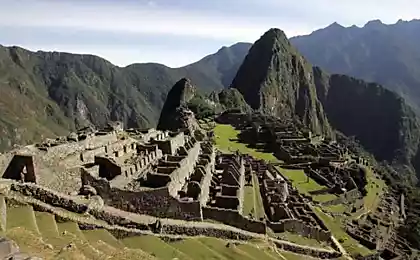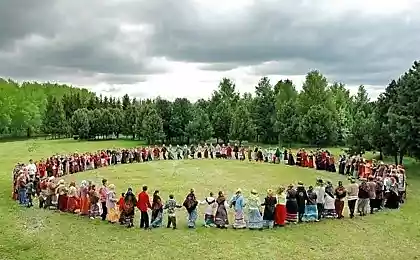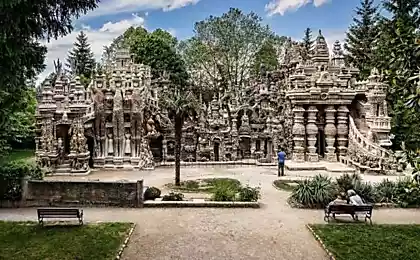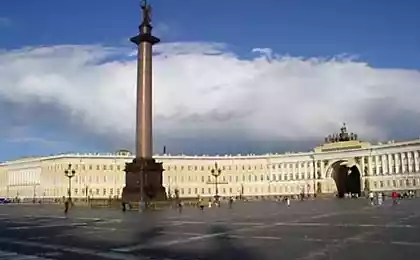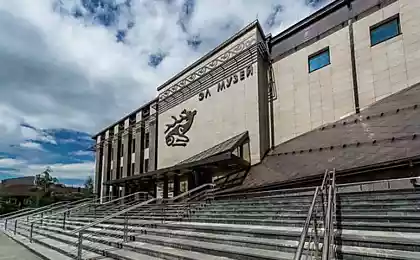2916
UNESCO heritage
UNESCO many cultural monuments - 759! All listed in this post is unreal. If interested, please visit the UNESCO.
Can delete from the list, such as happened in Dresden. They built a bridge that broke the original appearance of the complex historical monument.
PySy: I hope all the pictures and poodpisi post it right! Last post website chips buggy and lost a lot of pictures. The ensemble of the historic center of Lviv
Lviv was founded in the late Middle Ages, for several centuries is a thriving administrative, religious and commercial center. The medieval layout of the city preserved to this day almost unchanged (in particular, preserved evidence of living here of different ethnic communities). Also survived many fine Baroque and later buildings.

Churchyard Kizhi
Kizhi is located on one of the many islands of Lake Onega in Karelia. Here you can see two wooden churches in the XVIII., And octagonal bell tower, built of wood in 1862. These unusual structures, is the pinnacle of carpentry, are a model of the ancient parish, and in harmony with the surrounding natural landscape.
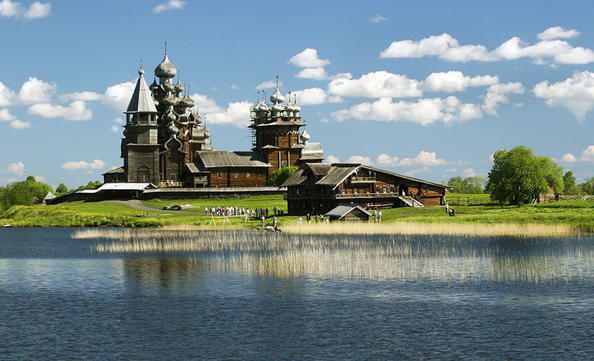
Historic Centre of Saint Petersburg and Related Groups of Monuments
"Venice of the North ', with its numerous canals and more than 400 bridges, - is the result of great urban project begun in 1703 under Peter the Great. The city is closely associated with the October Revolution of 1917, and in 1924-1991. He was named Leningrad. Its architectural heritage combines different styles such as Baroque and Classicism, which can be seen in the Admiralty, the Winter Palace, the Marble Palace and the Hermitage.

Historic Monuments of Novgorod and Surroundings
Novgorod, profitable Situated on the ancient trade route between Central Asia and northern Europe, was in the IX century. the first capital of Russia, the center of Orthodox spirituality and Russian architecture. Its medieval monuments, churches and monasteries, as well as the frescoes of Theophanes the Greek (Andrei Rublev's teacher), dating from the XIV century., Illustrate the outstanding level of architectural and artistic creativity.
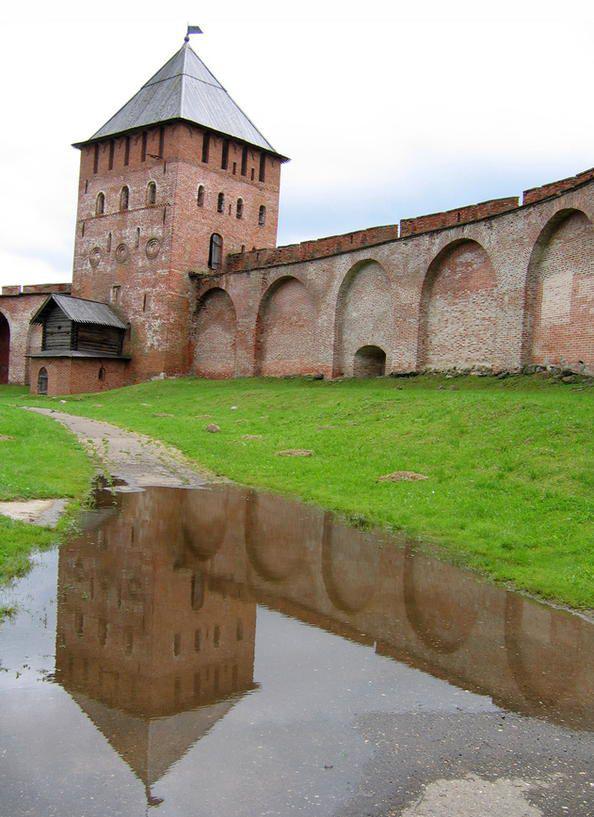
Kiev: Saint Sophia Cathedral and Related Monastic Buildings, Kiev-Pechersk Lavra
Designed to be a rival of the church Hagia Sophia in Constantinople, St. Sophia Cathedral symbolizes the emergence of Kiev - the capital of the Christian principality as "New Constantinople". The cathedral was built in the XI century., Ie shortly after the baptism of Rus (988) Prince Vladimir. Spiritual and intellectual influence of Kiev-Pechersk Lavra contributed to the spread of Orthodox culture and the Orthodox faith in Russia in the period from XVII to XIX centuries.
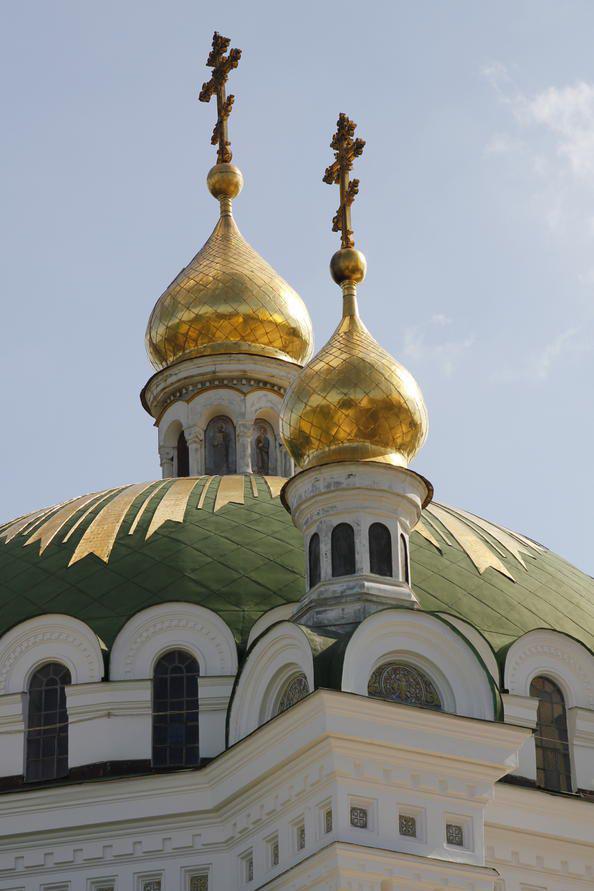
Belorussia.
Mir Castle Complex
Mir Castle was built at the beginning of the XVI century. in the Gothic style. Then he was greatly expanded and rebuilt, first in the Renaissance style, and then - Baroque. Further, nearly a century, the castle was abandoned, and during the War of 1812 he suffered serious damage. At the end of the XIX century. the castle was rebuilt in its architectural ensemble introduced new elements, and adjacent territory was divided into a landscaped park with a pond. The modern look of the castle - clear evidence of its rich and complex history.

The historic center of Prague
Old Town, Lesser Town (Mala Strana) and New Town were built during the XI-XVIII centuries. Their majestic monuments - Hradcany Castle, St. Vitus Cathedral, Charles Bridge and numerous churches and palaces - mostly erected in the XIV century. when Holy Roman Emperor Charles IV. They testify to the great architectural and cultural importance that this city had since the early Middle Ages.

The historic center of Cesky Krumlov
The city on the banks of the Vltava River originated around the castle in XIII., Combines elements of Gothic, Renaissance and Baroque. This is an outstanding example of a small medieval Central European city, the architectural heritage is preserved thanks to the peaceful development for five centuries.
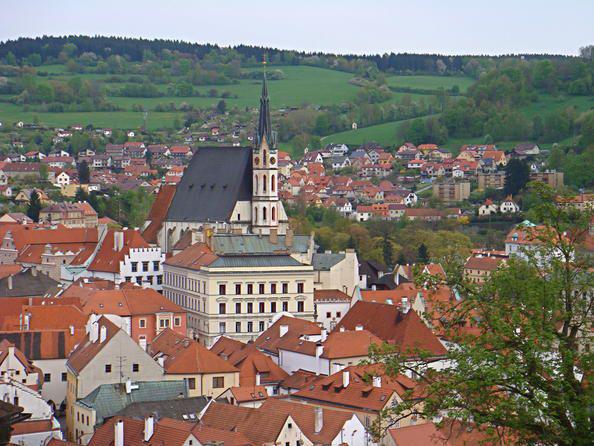
65-meter minaret of Jam - graceful, as if floating in the air structure built in the XII century. Having carefully trimmed brick surface with inscriptions in blue tile on completion, the minaret is notable for the quality of its architecture and decoration, representing the culmination of the architectural and artistic tradition in this region. Impression of the minaret is further enhanced by its location in an expressive environment, a deep river valley, framed by high mountains in the heart of the Gur province.
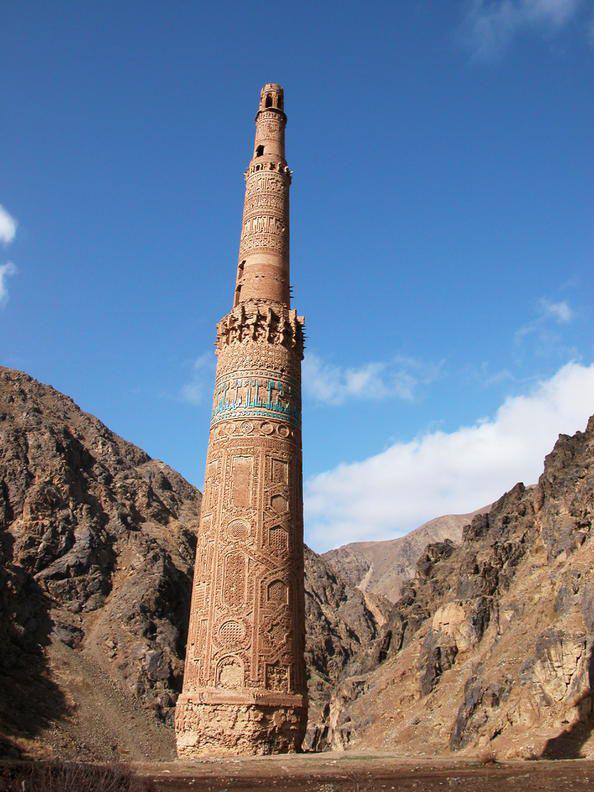
Algeria
Valley M'zab
The traditional settlement area Ibadi Muslims, existing since the X century. around five CRMS (fortified towns) in the valley M'zab, remained unchanged to the present day. Simple and functional, perfectly adapted to the environment architecture M'zab area was designed for community life, adhere to the traditional family structure. This is - a source of inspiration for today's urban planners.
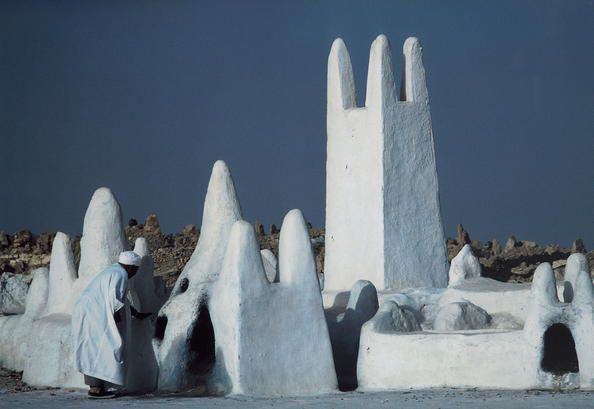
Haghpat and Sanahin
These medieval monasteries were built in the heyday of Armenia during the reign of the dynasty Kyurikyan (X-XIII cc.) - Then the monasteries served as important centers of education. In Sanain is the famous school of miniature artists and calligraphers, housed repository of books and manuscripts. Both the monastery complex are the best examples of the era heyday of Armenian religious architecture, unique style which was formed by mixing Byzantine and local Caucasian traditions.
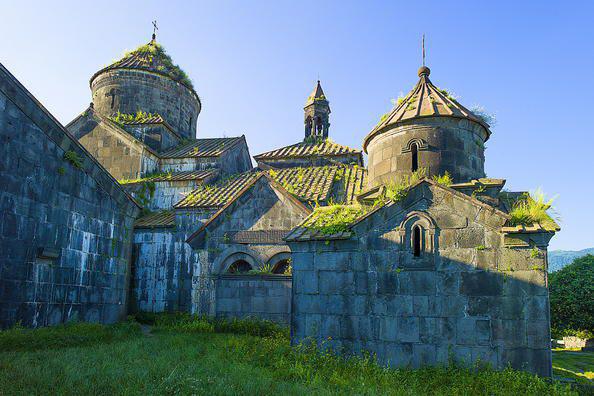
Armenia
Echmiadzin Cathedral (founded 1700 years ago), along with three ancient churches, as well as the ruins of Zvartnots temple in (mid-VII c.) Are outstanding monuments of the Armenian church architecture. They illustrate the development and improvement of Armenian churches cross-dome type that had a fundamental influence on the architecture and art of the region.
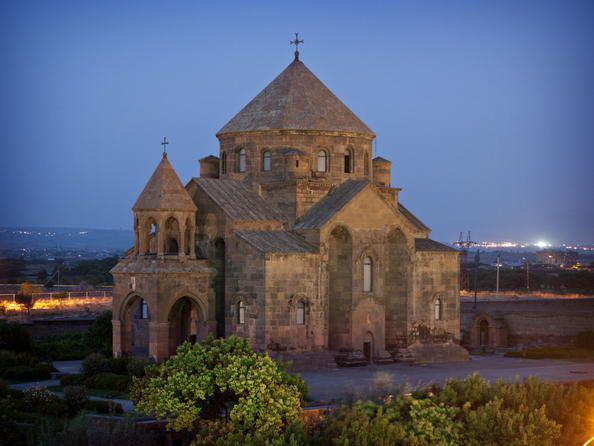
The palace and gardens of Schönbrunn (Vienna)
From the XVIII century. to 1918 Schönbrunn was the residence of the Habsburg emperors. It was built by the architects Johann Bernhard Fischer von Erlach and Nicolaus Pacassi and contains many outstanding examples of decorative art. Together with the park and the world's first zoological garden (1752) Schonbrunn is a wonderful ensemble in Baroque style and a perfect example of a complex object of art (what in German is termed - gezamtkunstverk).
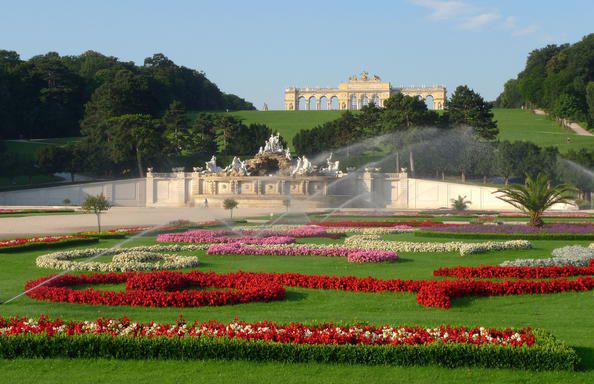
Austria
The cultural landscape of Hallstatt-Dachstein Salzkammergut region
Magnificent natural landscape of the Salzkammergut region from prehistoric times is a place of human habitation, and salt deposits were developed here from the 2nd millennium BC These resources were the basis of the prosperity of this area until the middle of XX century., Which is reflected in the unique architecture of the town of Hallstatt.

Azerbaijan
Walled City of Baku with the Shirvanshah's Palace and Maiden Tower
Built on inhabited areas from Paleolithic times, the Walled City of Baku has kept the features of different cultures, under whose influence she was on Throughout its long history, the Zoroastrians, the Sassanids, Arabs, Persians, Shirvanians, Turks, and Russian. Inner City - Icheri Sheher - has retained much of its surrounding ramparts XII century. At the base of the Maiden's Tower (Kiz-Calas), also built in the XII century., Traces of earlier structures dating back to VII-VI centuries. BC One of the pearls of Azerbaijani architecture is the Palace of Shirvanshakhs XV century.
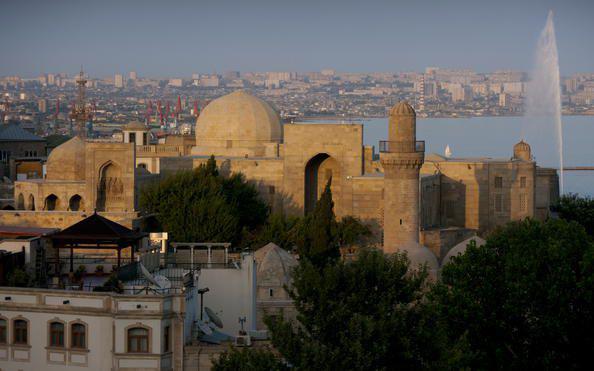
Archaeological monuments Qalat Al Bahrain
Qalat al-Bahrain - a typical "Tell", ie artificial hill formed by many successive cultural layers. Stratification of the "Tell" having a size of 300 x 600 m indicate a continuous human presence here from about 2300 BC until the sixteenth century. BC About 25% of the site has been excavated, which opened facilities for different purposes: residential, public, commercial, religious and military. These findings confirmed the finding in this place for centuries an important trading port. At the top of the 12-meter hill is impressive Portuguese fort, from which there was a name of the object - "feces" (castle). It was the capital of Dilmun - the state where there was one of the ancient civilizations of the region. Preserve the rich archaeological heritage, clearly characterizes this civilization, which was previously known only from written Sumerian references to sources.

Belgium
La Grande Place in Brussels
La Grande Place in Brussels - an outstanding coherent set of public and private buildings, dating mainly the end of the XVII century. Their architecture exemplifies the level of social and cultural life of Brussels as an important political and commercial center of Europe at that time.
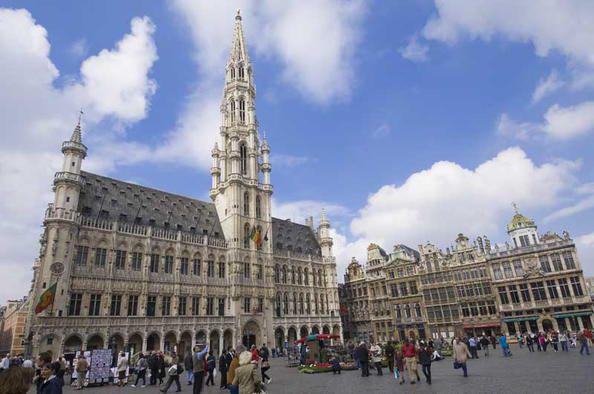
Belgium
The historic center of Bruges
Bruges - a vivid example of a medieval settlement, which is well preserved its centuries-old historic building in which the original Gothic structure represents an important part of the identity of the city. As one of the commercial and cultural capitals of Europe, Brugge developed cultural links to different parts of the world. The city has been closely associated with the formation of the Flemish school of painting.
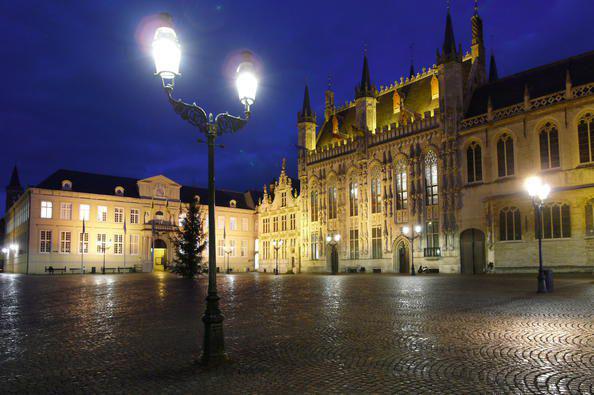
Belfries of Belgium and France
23 of the bell tower in the north of France and the belfry in Gembloux in Belgium complete the 30 Belgian urban towers included in the World Heritage List in 1999 as an object of "Tower of Flanders and Wallonia." Built between the eleventh and seventeenth centuries. and include in its architecture to the Romanesque and Gothic styles, Renaissance and Baroque. This - bright symbols of civil liberties. While Italian, German and English towns mainly opted to build town halls, in some countries of northwestern Europe (France, Belgium and the Netherlands) was dominated by the bell tower. Initially, the bell tower erected to commemorate the independence of the commune and its receipt of the Charter, as a symbol of newfound freedom. In contrast to the castle tower (symbol Signora, ie - the feudal lord) and the church bell tower (symbol of the Church), the belfry - the third dominant in the landscape of the city tower - symbolized the power of the aldermen. Over the centuries, they came to represent the power and wealth of the towns.
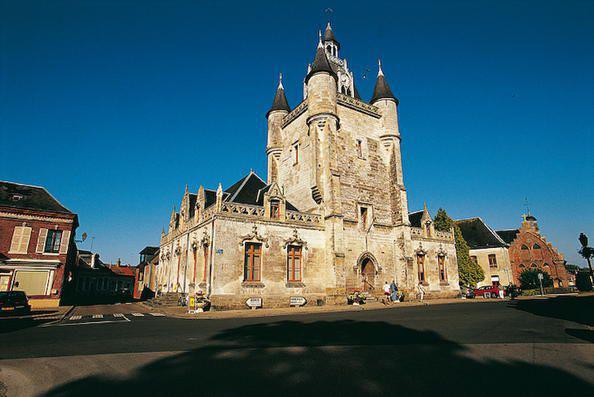
Benin
Royal Palaces of Abomey
During the period 1625-1900 gg. replaced by 12 governors of the powerful kingdom of Abomey. With the exception of King Akaba, who had his private residence, the palaces of the rulers were located within the same walled area. Each new palace erected next to the same, using conventional building materials. Royal Palaces of Abomey - a unique memory of that vanished country.
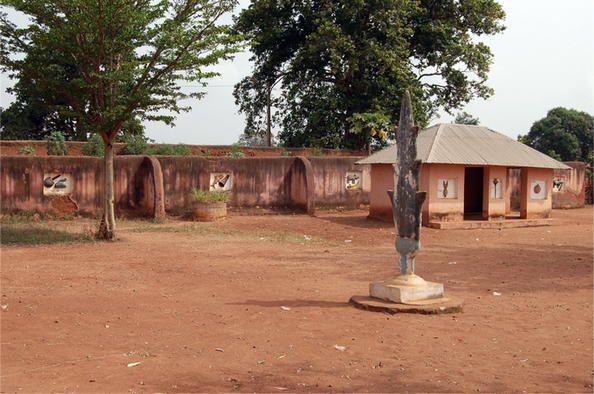
Bolivia
The ancient city of Tiwanaku: Spiritual and political center of the pre-Hispanic Indian culture
The city of Tiwanaku, capital of a powerful pre-Hispanic empire that dominated a vast area occupied by the Southern Andes and their surroundings, reached its apogee in the period from 500 to 900 years. BC Monuments testify to the cultural and political significance of this civilization that stands out among all the other pre-Hispanic empires of America.

Brazil
The historic center of the city of Olinda
The history of this city, founded in the XVI century. Portuguese, related to the production of cane sugar. Urban sprawl, rebuilt after the looting of the city by the Dutch, mainly refers to the XVIII century. The harmonious combination of buildings, gardens, 20 Baroque churches, monasteries and many small "Passos" (hours) contributes to the special charm of Olinda.
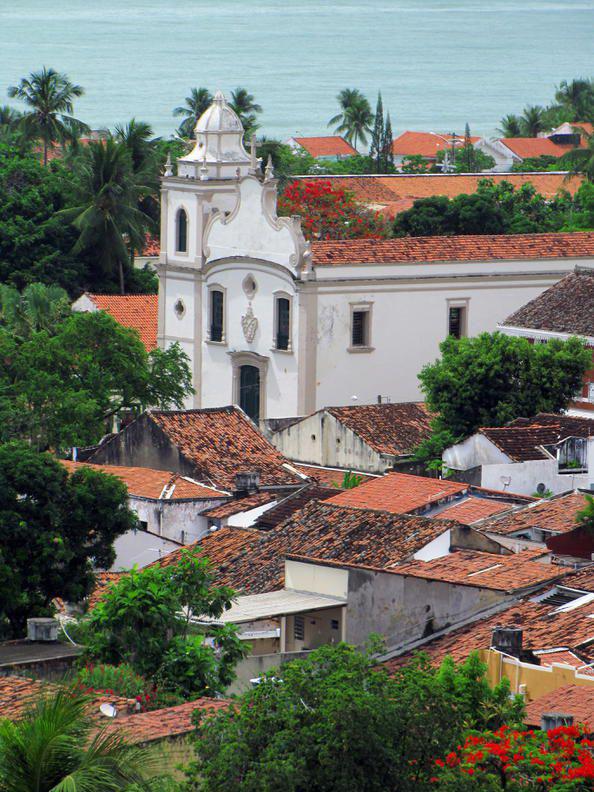
Bulgaria
Rock-Hewn Churches of Ivanovo
Complex consisting of Bulgarian medieval churches, chapels and monastic cells, carved in the rocks on the river Rusenski Lom gyrus. Preserved frescoes here XIII-XIV century, made unique by the ink composition, experts attribute the greatest treasure of Bulgarian medieval painting. In these rocks sheltering the early Christian hermits. It has built the temples of XII century.

Bulgaria
Rila Monastery
Rila Monastery was founded in the X century. St. Ivan Rilski, a hermit canonized by the Orthodox Church. His ascetic dwelling and tomb became a holy place and were transformed into a monastic complex plays an important role in the spiritual and social life of medieval Bulgaria. Destroyed by fire in the early XIX century. the complex was rebuilt in 1834-1862 gg. Is a characteristic example of the Bulgarian Renaissance (XVIII-XIX centuries.), This monument symbolizes the triumph of Slavic cultural identity following centuries of foreign oppression.

Cambodia
Angkor
Angkor is one of the most important archaeological sites in South-East Asia. Spread over an area greater than with forests 400 sq. km, Angkor Archaeological Park has magnificent ruins preserved from several capitals of the Khmer Empire IX-XV centuries. This is a famous temple of Angkor Wat, the Bayon temple at Angkor Thom with countless sculptural decorations. UNESCO has developed a comprehensive program for the protection of the symbolic importance of the object and its environment.

Historic District of Old Québec
Quebec was founded by the French explorer Champlain in the early XVII century. It is the only city in North America, with lots of trees preserved bastions, gates and defensive units, and still surrounding Old Quebec. Upper Town, built on the cliff, has remained the religious and administrative center with churches, monasteries and other monuments - Dauphine Redoubt, the Citadel, and the hotel Château Frontenac. Together with the Lower Town and its old quarters it forms the urban ensemble which is one of the best examples of colonial fortified city.

National Park Rapanui (Easter Island)
Rapanui, indigenous name of Easter Island, is a testament to the unique cultural phenomenon. Community Polynesian origin reside here with the IV., To create a powerful, rich images, original tradition of monumental sculpture and architecture, free from any external influences. Between X - XVI centuries. is a community built shrines and erected enormous stone statues, known as "moai" that form a unique cultural landscape that continues to fascinate people around the world.
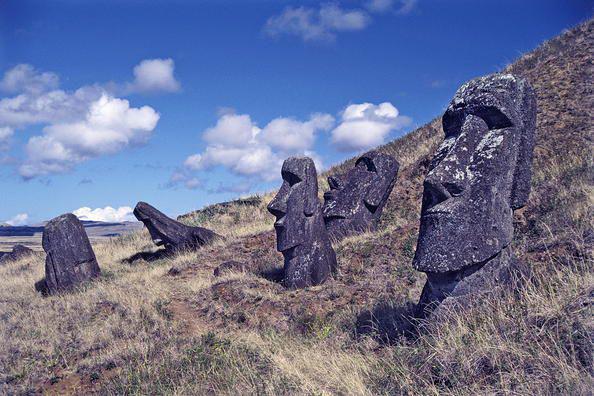
Great Wall of China
In the 220's. BC during the reign of Qin Shi Huang, sections of earlier fortifications built were consolidated into a single defense system against invasions from the north. Construction continued up to the time of the Ming Dynasty (1368-1644 gg.), When the Great Wall became the world's largest military installations. Its historic and strategic importance is matched only by its architectural significance.
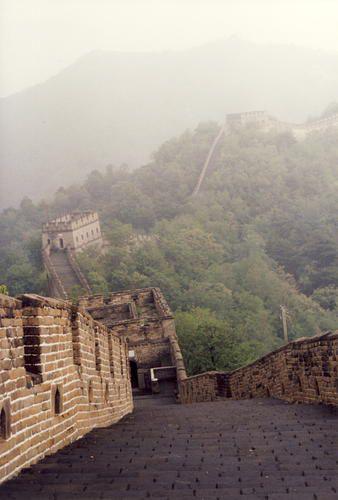
The tomb of the first emperor of the Qin Dynasty
Thousands of statues of the archaeological site discovered only in 1974, are still under the soil. Qin Shi Huang, the first unifier of China (who died in 210 BC), was buried here, surrounded by the famous terracotta warriors in the center of the complex. This complex is built on the same layout as the capital of the country - the city of Xianyang. Dissimilar figures with horses, chariots and weapons - is a masterpiece of realistic art of great historical interest.
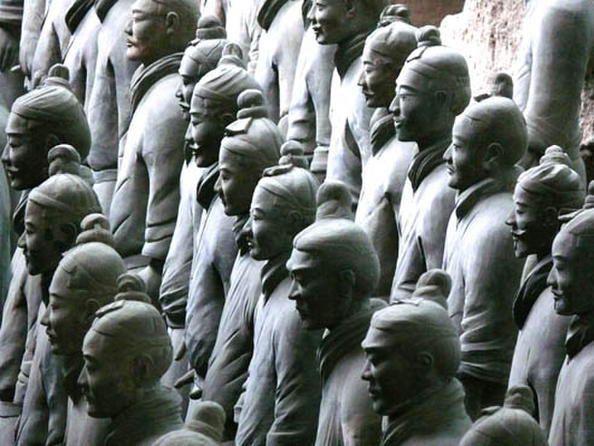
Colombia
Archaeological Park of San Agustin
The largest in South America, a group of religious monuments and megalithic sculptures located in the middle of the desert scenic landscape. Gods and mythical animals are skillfully presented in a variety of styles - from realism to abstraction. These works of art testify to the high creative potential of culture that flourished in the area of the Northern Andes in I-VIII centuries.

Old Town in Dubrovnik
"Pearl of the Adriatic", located on the Dalmatian coast, was an important political force in the Mediterranean since the XIII century. Dubrovnik, though greatly damaged by an earthquake in 1667, has kept its beautiful Gothic, Baroque and renescansnye churches, monasteries, palaces and fountains. Again suffered in the 1990s. in armed conflict, the city recovered in a large part of the restoration program coordinated by UNESCO. 0

Havana was founded by the Spanish in 1519 ... By the XVII century. the city became one of the main shipbuilding centers in the Caribbean.
At the end of the XIX century.
France
France
BC
BC
BC
BC
BC
Can delete from the list, such as happened in Dresden. They built a bridge that broke the original appearance of the complex historical monument.
PySy: I hope all the pictures and poodpisi post it right! Last post website chips buggy and lost a lot of pictures. The ensemble of the historic center of Lviv
Lviv was founded in the late Middle Ages, for several centuries is a thriving administrative, religious and commercial center. The medieval layout of the city preserved to this day almost unchanged (in particular, preserved evidence of living here of different ethnic communities). Also survived many fine Baroque and later buildings.

Churchyard Kizhi
Kizhi is located on one of the many islands of Lake Onega in Karelia. Here you can see two wooden churches in the XVIII., And octagonal bell tower, built of wood in 1862. These unusual structures, is the pinnacle of carpentry, are a model of the ancient parish, and in harmony with the surrounding natural landscape.

Historic Centre of Saint Petersburg and Related Groups of Monuments
"Venice of the North ', with its numerous canals and more than 400 bridges, - is the result of great urban project begun in 1703 under Peter the Great. The city is closely associated with the October Revolution of 1917, and in 1924-1991. He was named Leningrad. Its architectural heritage combines different styles such as Baroque and Classicism, which can be seen in the Admiralty, the Winter Palace, the Marble Palace and the Hermitage.

Historic Monuments of Novgorod and Surroundings
Novgorod, profitable Situated on the ancient trade route between Central Asia and northern Europe, was in the IX century. the first capital of Russia, the center of Orthodox spirituality and Russian architecture. Its medieval monuments, churches and monasteries, as well as the frescoes of Theophanes the Greek (Andrei Rublev's teacher), dating from the XIV century., Illustrate the outstanding level of architectural and artistic creativity.

Kiev: Saint Sophia Cathedral and Related Monastic Buildings, Kiev-Pechersk Lavra
Designed to be a rival of the church Hagia Sophia in Constantinople, St. Sophia Cathedral symbolizes the emergence of Kiev - the capital of the Christian principality as "New Constantinople". The cathedral was built in the XI century., Ie shortly after the baptism of Rus (988) Prince Vladimir. Spiritual and intellectual influence of Kiev-Pechersk Lavra contributed to the spread of Orthodox culture and the Orthodox faith in Russia in the period from XVII to XIX centuries.

Belorussia.
Mir Castle Complex
Mir Castle was built at the beginning of the XVI century. in the Gothic style. Then he was greatly expanded and rebuilt, first in the Renaissance style, and then - Baroque. Further, nearly a century, the castle was abandoned, and during the War of 1812 he suffered serious damage. At the end of the XIX century. the castle was rebuilt in its architectural ensemble introduced new elements, and adjacent territory was divided into a landscaped park with a pond. The modern look of the castle - clear evidence of its rich and complex history.

The historic center of Prague
Old Town, Lesser Town (Mala Strana) and New Town were built during the XI-XVIII centuries. Their majestic monuments - Hradcany Castle, St. Vitus Cathedral, Charles Bridge and numerous churches and palaces - mostly erected in the XIV century. when Holy Roman Emperor Charles IV. They testify to the great architectural and cultural importance that this city had since the early Middle Ages.

The historic center of Cesky Krumlov
The city on the banks of the Vltava River originated around the castle in XIII., Combines elements of Gothic, Renaissance and Baroque. This is an outstanding example of a small medieval Central European city, the architectural heritage is preserved thanks to the peaceful development for five centuries.

65-meter minaret of Jam - graceful, as if floating in the air structure built in the XII century. Having carefully trimmed brick surface with inscriptions in blue tile on completion, the minaret is notable for the quality of its architecture and decoration, representing the culmination of the architectural and artistic tradition in this region. Impression of the minaret is further enhanced by its location in an expressive environment, a deep river valley, framed by high mountains in the heart of the Gur province.

Algeria
Valley M'zab
The traditional settlement area Ibadi Muslims, existing since the X century. around five CRMS (fortified towns) in the valley M'zab, remained unchanged to the present day. Simple and functional, perfectly adapted to the environment architecture M'zab area was designed for community life, adhere to the traditional family structure. This is - a source of inspiration for today's urban planners.

Haghpat and Sanahin
These medieval monasteries were built in the heyday of Armenia during the reign of the dynasty Kyurikyan (X-XIII cc.) - Then the monasteries served as important centers of education. In Sanain is the famous school of miniature artists and calligraphers, housed repository of books and manuscripts. Both the monastery complex are the best examples of the era heyday of Armenian religious architecture, unique style which was formed by mixing Byzantine and local Caucasian traditions.

Armenia
Echmiadzin Cathedral (founded 1700 years ago), along with three ancient churches, as well as the ruins of Zvartnots temple in (mid-VII c.) Are outstanding monuments of the Armenian church architecture. They illustrate the development and improvement of Armenian churches cross-dome type that had a fundamental influence on the architecture and art of the region.

The palace and gardens of Schönbrunn (Vienna)
From the XVIII century. to 1918 Schönbrunn was the residence of the Habsburg emperors. It was built by the architects Johann Bernhard Fischer von Erlach and Nicolaus Pacassi and contains many outstanding examples of decorative art. Together with the park and the world's first zoological garden (1752) Schonbrunn is a wonderful ensemble in Baroque style and a perfect example of a complex object of art (what in German is termed - gezamtkunstverk).

Austria
The cultural landscape of Hallstatt-Dachstein Salzkammergut region
Magnificent natural landscape of the Salzkammergut region from prehistoric times is a place of human habitation, and salt deposits were developed here from the 2nd millennium BC These resources were the basis of the prosperity of this area until the middle of XX century., Which is reflected in the unique architecture of the town of Hallstatt.

Azerbaijan
Walled City of Baku with the Shirvanshah's Palace and Maiden Tower
Built on inhabited areas from Paleolithic times, the Walled City of Baku has kept the features of different cultures, under whose influence she was on Throughout its long history, the Zoroastrians, the Sassanids, Arabs, Persians, Shirvanians, Turks, and Russian. Inner City - Icheri Sheher - has retained much of its surrounding ramparts XII century. At the base of the Maiden's Tower (Kiz-Calas), also built in the XII century., Traces of earlier structures dating back to VII-VI centuries. BC One of the pearls of Azerbaijani architecture is the Palace of Shirvanshakhs XV century.

Archaeological monuments Qalat Al Bahrain
Qalat al-Bahrain - a typical "Tell", ie artificial hill formed by many successive cultural layers. Stratification of the "Tell" having a size of 300 x 600 m indicate a continuous human presence here from about 2300 BC until the sixteenth century. BC About 25% of the site has been excavated, which opened facilities for different purposes: residential, public, commercial, religious and military. These findings confirmed the finding in this place for centuries an important trading port. At the top of the 12-meter hill is impressive Portuguese fort, from which there was a name of the object - "feces" (castle). It was the capital of Dilmun - the state where there was one of the ancient civilizations of the region. Preserve the rich archaeological heritage, clearly characterizes this civilization, which was previously known only from written Sumerian references to sources.

Belgium
La Grande Place in Brussels
La Grande Place in Brussels - an outstanding coherent set of public and private buildings, dating mainly the end of the XVII century. Their architecture exemplifies the level of social and cultural life of Brussels as an important political and commercial center of Europe at that time.

Belgium
The historic center of Bruges
Bruges - a vivid example of a medieval settlement, which is well preserved its centuries-old historic building in which the original Gothic structure represents an important part of the identity of the city. As one of the commercial and cultural capitals of Europe, Brugge developed cultural links to different parts of the world. The city has been closely associated with the formation of the Flemish school of painting.

Belfries of Belgium and France
23 of the bell tower in the north of France and the belfry in Gembloux in Belgium complete the 30 Belgian urban towers included in the World Heritage List in 1999 as an object of "Tower of Flanders and Wallonia." Built between the eleventh and seventeenth centuries. and include in its architecture to the Romanesque and Gothic styles, Renaissance and Baroque. This - bright symbols of civil liberties. While Italian, German and English towns mainly opted to build town halls, in some countries of northwestern Europe (France, Belgium and the Netherlands) was dominated by the bell tower. Initially, the bell tower erected to commemorate the independence of the commune and its receipt of the Charter, as a symbol of newfound freedom. In contrast to the castle tower (symbol Signora, ie - the feudal lord) and the church bell tower (symbol of the Church), the belfry - the third dominant in the landscape of the city tower - symbolized the power of the aldermen. Over the centuries, they came to represent the power and wealth of the towns.

Benin
Royal Palaces of Abomey
During the period 1625-1900 gg. replaced by 12 governors of the powerful kingdom of Abomey. With the exception of King Akaba, who had his private residence, the palaces of the rulers were located within the same walled area. Each new palace erected next to the same, using conventional building materials. Royal Palaces of Abomey - a unique memory of that vanished country.

Bolivia
The ancient city of Tiwanaku: Spiritual and political center of the pre-Hispanic Indian culture
The city of Tiwanaku, capital of a powerful pre-Hispanic empire that dominated a vast area occupied by the Southern Andes and their surroundings, reached its apogee in the period from 500 to 900 years. BC Monuments testify to the cultural and political significance of this civilization that stands out among all the other pre-Hispanic empires of America.

Brazil
The historic center of the city of Olinda
The history of this city, founded in the XVI century. Portuguese, related to the production of cane sugar. Urban sprawl, rebuilt after the looting of the city by the Dutch, mainly refers to the XVIII century. The harmonious combination of buildings, gardens, 20 Baroque churches, monasteries and many small "Passos" (hours) contributes to the special charm of Olinda.

Bulgaria
Rock-Hewn Churches of Ivanovo
Complex consisting of Bulgarian medieval churches, chapels and monastic cells, carved in the rocks on the river Rusenski Lom gyrus. Preserved frescoes here XIII-XIV century, made unique by the ink composition, experts attribute the greatest treasure of Bulgarian medieval painting. In these rocks sheltering the early Christian hermits. It has built the temples of XII century.

Bulgaria
Rila Monastery
Rila Monastery was founded in the X century. St. Ivan Rilski, a hermit canonized by the Orthodox Church. His ascetic dwelling and tomb became a holy place and were transformed into a monastic complex plays an important role in the spiritual and social life of medieval Bulgaria. Destroyed by fire in the early XIX century. the complex was rebuilt in 1834-1862 gg. Is a characteristic example of the Bulgarian Renaissance (XVIII-XIX centuries.), This monument symbolizes the triumph of Slavic cultural identity following centuries of foreign oppression.

Cambodia
Angkor
Angkor is one of the most important archaeological sites in South-East Asia. Spread over an area greater than with forests 400 sq. km, Angkor Archaeological Park has magnificent ruins preserved from several capitals of the Khmer Empire IX-XV centuries. This is a famous temple of Angkor Wat, the Bayon temple at Angkor Thom with countless sculptural decorations. UNESCO has developed a comprehensive program for the protection of the symbolic importance of the object and its environment.

Historic District of Old Québec
Quebec was founded by the French explorer Champlain in the early XVII century. It is the only city in North America, with lots of trees preserved bastions, gates and defensive units, and still surrounding Old Quebec. Upper Town, built on the cliff, has remained the religious and administrative center with churches, monasteries and other monuments - Dauphine Redoubt, the Citadel, and the hotel Château Frontenac. Together with the Lower Town and its old quarters it forms the urban ensemble which is one of the best examples of colonial fortified city.

National Park Rapanui (Easter Island)
Rapanui, indigenous name of Easter Island, is a testament to the unique cultural phenomenon. Community Polynesian origin reside here with the IV., To create a powerful, rich images, original tradition of monumental sculpture and architecture, free from any external influences. Between X - XVI centuries. is a community built shrines and erected enormous stone statues, known as "moai" that form a unique cultural landscape that continues to fascinate people around the world.

Great Wall of China
In the 220's. BC during the reign of Qin Shi Huang, sections of earlier fortifications built were consolidated into a single defense system against invasions from the north. Construction continued up to the time of the Ming Dynasty (1368-1644 gg.), When the Great Wall became the world's largest military installations. Its historic and strategic importance is matched only by its architectural significance.

The tomb of the first emperor of the Qin Dynasty
Thousands of statues of the archaeological site discovered only in 1974, are still under the soil. Qin Shi Huang, the first unifier of China (who died in 210 BC), was buried here, surrounded by the famous terracotta warriors in the center of the complex. This complex is built on the same layout as the capital of the country - the city of Xianyang. Dissimilar figures with horses, chariots and weapons - is a masterpiece of realistic art of great historical interest.

Colombia
Archaeological Park of San Agustin
The largest in South America, a group of religious monuments and megalithic sculptures located in the middle of the desert scenic landscape. Gods and mythical animals are skillfully presented in a variety of styles - from realism to abstraction. These works of art testify to the high creative potential of culture that flourished in the area of the Northern Andes in I-VIII centuries.

Old Town in Dubrovnik
"Pearl of the Adriatic", located on the Dalmatian coast, was an important political force in the Mediterranean since the XIII century. Dubrovnik, though greatly damaged by an earthquake in 1667, has kept its beautiful Gothic, Baroque and renescansnye churches, monasteries, palaces and fountains. Again suffered in the 1990s. in armed conflict, the city recovered in a large part of the restoration program coordinated by UNESCO. 0

Havana was founded by the Spanish in 1519 ... By the XVII century. the city became one of the main shipbuilding centers in the Caribbean.
At the end of the XIX century.
France
France
BC
BC
BC
BC
BC

